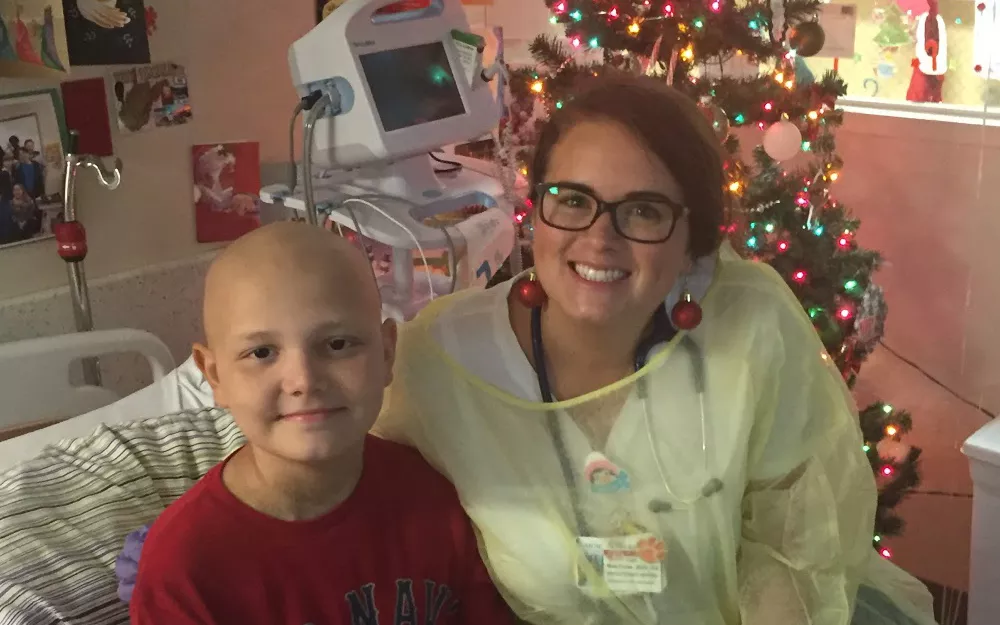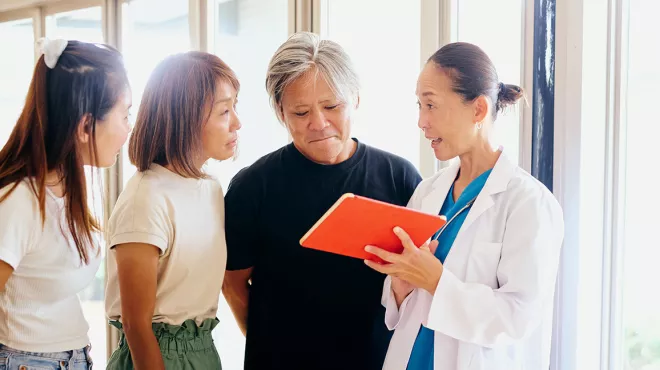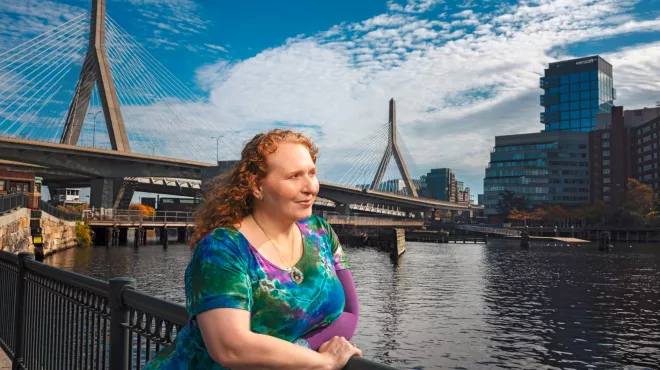This story represents a specific point in time in Ryan’s journey with ALL.
In early August 2015, just two weeks into his school year, 11-year-old Ryan showed signs of what his parents thought was a typical stomach bug. But what started as a stomachache and an on- again, off-again fever turned into a shocking diagnosis of leukemia – and a battle for Ryan, his family and his healthcare team to gain control over his cancer.
When Ryan became ill, his parents, Jenny and Mike, took him to his primary care doctor for an exam and blood tests. The results showed Ryan had dangerously low levels of hemoglobin, a protein in the red blood cells that helps carry oxygen to vital organs. Ryan’s doctor immediately sent the family to a nearby hospital for further testing. There, doctors quickly diagnosed Ryan with acute lymphoblastic leukemia (ALL), a common childhood cancer. In ALL, the bone marrow releases a torrent of large, malignant white blood cells called lymphocytes. These crowd out healthy blood cells, including oxygen-carrying red blood cells and platelets essential for clotting. Additionally, the acute nature of the disease means that illness begins and progresses quickly.1
“I barely even knew what cancer meant,” says Ryan. “I didn’t understand how it affected me or how hard it was going to be.”
Treatment began immediately after Ryan’s diagnosis. At first, his parents were optimistic about the prognosis. The doctors said ALL was very treatable and that about 85% of kids achieve remission, meaning all signs of the cancer are gone.2 But things didn’t turn out the way they’d hoped.
I barely even knew what cancer meant…I didn’t understand how it affected me or how hard it was going to be.
Ryan, diagnosed with cancer during childhood
A challenging road ahead
Ryan’s cancer resisted the initial round of chemotherapy. Over the next two months, he was given subsequent rounds of chemotherapy, which also did not work. His primary oncologist suggested a bone marrow transplant as a next step to help replace Ryan’s damaged bone marrow with healthy bone marrow and stem cells. The search began for a donor whose blood type matched Ryan’s. The entire family was tested, and it turned out that his older brother, Will, was an exact match. But Ryan’s cancer soon worsened, making a transplant impossible.
“People always say the hardest thing is hearing your kid has cancer. I disagree,” said Mike. “The hardest part is hearing that after two months you’re almost out of options. I remember the doctor once left us a voicemail, and you could hear in her tone that something was wrong. I think she feared Ryan wasn’t ever going to reach remission.”

Ryan’s doctors and family held out hope that he could receive a transplant if he achieved remission by late December. The plan required that Ryan be readmitted to the hospital for additional rounds of intense chemotherapy. He was hospitalized for more than a month, forcing him to miss two of his favorite holidays, Halloween and Thanksgiving.
The chemotherapy made Ryan very sick. “The chemotherapy was so strong he couldn’t eat or walk, he lost 20 to 30 pounds [9 to 13 kilograms],” said Jenny. “Then he got sick when the port for his daily infusions became infected. We were worried that we would lose him.”
Surrounded by support
Ryan’s family, friends, care team and community banded together to manage a way through the crisis and help keep him positive.
His spirits were buoyed by the love and support of family and friends. His parents took shifts staying at his bedside overnight, and his grandparents were always on hand to help. Some friends organized fundraisers and auctions, while others prepared weekly meals to support the family.
Ryan’s aunt led a “Christmas card challenge” on social media, encouraging people from around the world to send Christmas card messages and well wishes. Ryan kept a large map in his room and used stickers to track all the cards that arrived. In total, he received more than 6,000 holiday cards – enough stickers to cover all 50 US states as well as 29 countries.
His family remains hopeful about the future and reflects on what is most important. “For Ryan, my hope for his future is time,” his mother says. “I want him to have a full life like any parent would want their child to have. I want to see him go to high school, go to [the US school celebration] prom and graduate. I want to see him get married! I want him to have the gift of time and of happiness.”
Ryan continues the fight against ALL by advocating for kids battling this aggressive disease.



